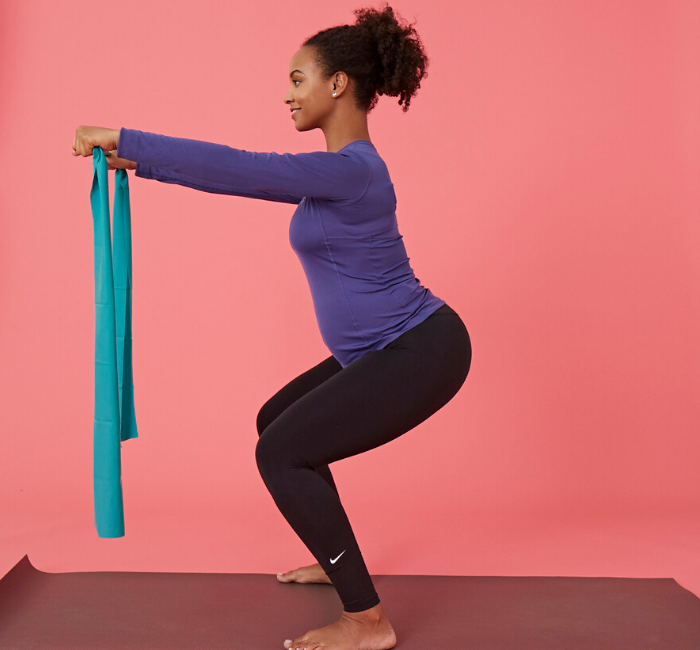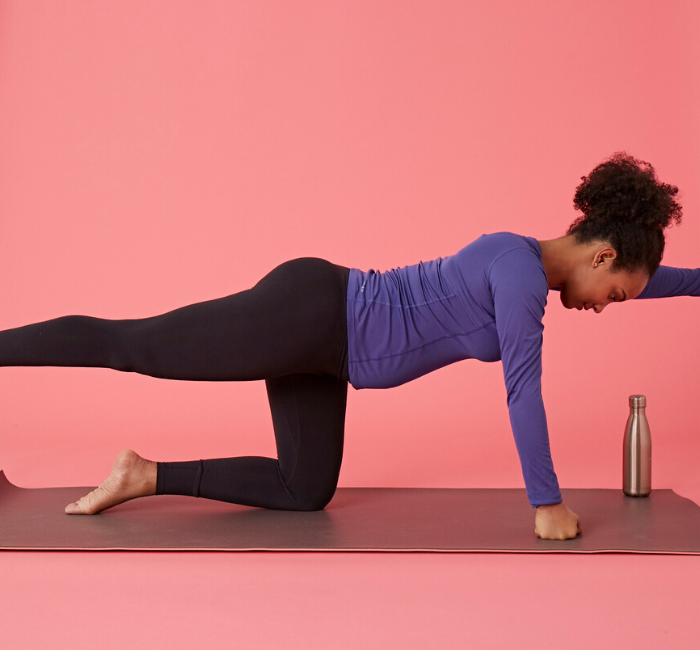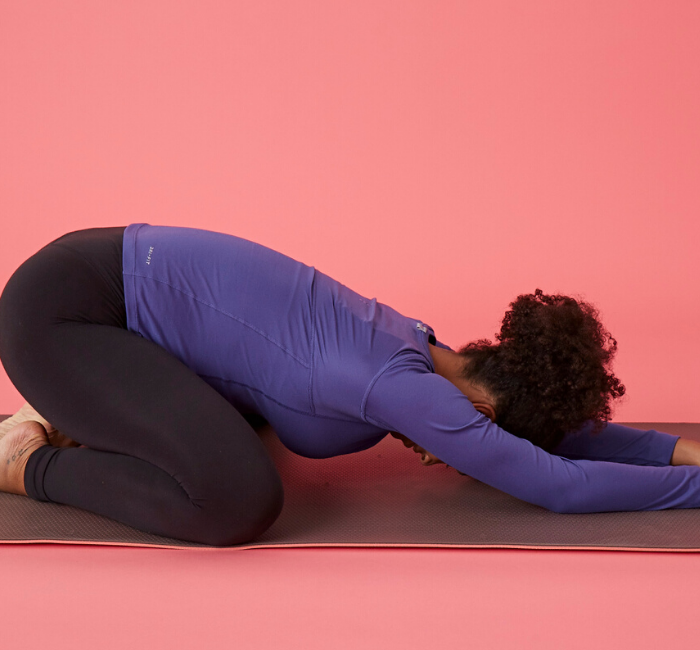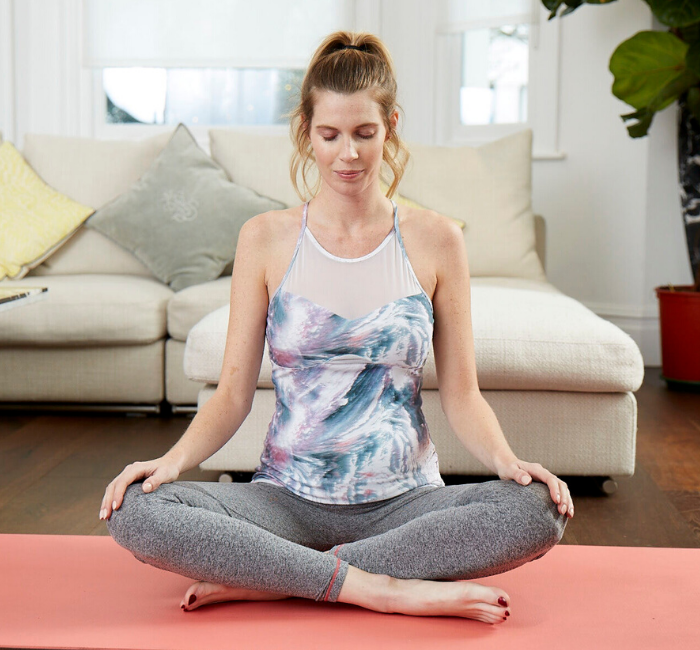Try These 9 At-Home Exercises During Third Trimester of Pregnancy
Staying active throughout your pregnancy (once your antenatal caregiver has given you the go-ahead) can provide many benefits. You’ll see improved sleep and a boost to mental health. As you gain postural strength your body will change and your posture improve. Best of all, you’ll have a quicker recovery following your delivery.
All women experience pregnancy differently. Some women suffer pain through their back, legs or pelvis, while other women seem to sail through pregnancy with ease. To help, try these simple exercises to prepare the body for labour and delivery.
Many of these exercises can be found in the biamove section of the Biamother app. This article focuses on exercises to prepare for labour and delivery. The better prepared you are for delivery, the faster your recovery time. If you’re aiming for a vaginal birth, then these exercises will help to encourage the baby into the optimal position for delivery. If you’re going to have a c-section (planned or unplanned), these exercises will keep you mobile and strong to give you the best recovery possible.

SQUATS
The squat is the queen of exercises during pregnancy. You can do them in every trimester. They keep your legs and glutes (bum muscles) strong. They help baby to descend into the optimum position for delivery.
- Stand with your feet slightly wider than hip-width apart, wider if you’re further along in pregnancy. You want to create a space for your bump when you squat.
- Inhale, push your bum back and bend your knees to lower yourself. Think about trying to find a chair behind you without your hands while keeping your chest upright.
- Exhale, gather up your pelvic floor and return to standing.
WALKING
Gravity can help to get the baby into the right position with its head down and into your pelvis.
- If you feel comfortable enough, then try to get outside for a walk each day (while social distancing of course!). Aim for 30-45 minutes if you can, but anything will help.
- In early labour, walking can help to encourage progress. Gravity is a great help in moving baby down the birth canal.

BIRD DOG
This exercise will help to maintain core strength and connection during pregnancy, It will also improve stability in your hips after delivery as pregnancy hormones can cause your pelvis to become unstable.
- Start on all fours with your hands under shoulders and your knees under your hips.
- Inhale and then on your exhale gather up your pelvic floor and extend your right arm out in front of you and your left leg out behind you.
- Keep your hips and shoulders level by gently engaging your core.
- Inhale to return to the start position and repeat on the other side.
- The movement in this exercise should be slow and deliberate. If you find that you can’t keep your hips and shoulders level with one leg and one arm off the floor, don’t worry. Do the exercise just working one arm at a time and then one leg at a time.
PELVIC TILTS
These will help to strengthen your pelvic floor and inner core muscles. They also keep your pelvis and lower back mobile and secure. They can be done standing, seated or lying down. I’ll discuss standing pelvic tilts here.
- Stand with your feet hip width apart and one hand on each of your hip bones. Imagine that sitting in the top of your pelvis is a bowl of water. When you’re standing normally the water should be level.
- As you inhale, allow your belly and pelvic floor to relax fully and tilt your pelvis back. Imagine that the water in your bowl is spilling out of the front.
- On your exhale, gather up your pelvic floor, squeeze the layers of your core muscles and tuck your tailbone under to bring your pelvis through the neutral position and into a posterior tilt. The water in your imaginary bowl should now be spilling out of the back of the bowl.
- Repeat, focusing on using your pelvic floor and core muscles to move your pelvis.
TVA ACTIVATIONS
Your transverse abdominis are deep core muscles that act as a stabiliser for your lower back and core. Strengthening them can help with posture and recovery after birth, as well as help with lower back pain.
- Stand upright with one hand on your lower belly and one hand on your ribs.
- Keep your spine neutral and inhale. Allow your breath to fill your belly, ribs and back and your pelvic floor to relax fully.
- As you exhale, gather up your pelvic floor and squeeze your deep core muscles (but not your bum muscles). Think about giving your baby a hug from the inside. You might see your bump get smaller as the muscles do their job, it’s the disappearing baby bump trick!
- Repeat, with a focus on keeping the movements slow and synchronised with your breath.
SWISS BALL PELVIC ROLLS
These are particularly useful if you start to struggle with pelvic girdle pain. These exercises keep your pelvis and lower back moving gently. They’ll also strengthen your lower abdominals and encourage the baby into the optimal position for delivery by keeping your pelvis upright, forward and open. You could even find this position comfortable and useful during labour.
- Ensure that your swiss ball is pumped up enough so that your hips are above your knees when you sit on it.
- Plant both feet on the floor and start drawing small circles with your pelvis in both directions making sure that you relax your belly and pelvic floor when the ball is being gently pushed forward.
- You can also roll the ball forward and back or side to side, do whatever feels good for your body, but make sure you’re always stable and not at risk of falling off the ball.

ELEVATED CHILD’S POSE
This is a lovely stretch for your lower back. It will create space in your hips and pelvis to help your pelvic floor stretch and relax for delivery.
- Find something relatively low, like a sofa or footrest, and kneel facing it with your knees wide to make room for your bump.
- Place your elbows and lower arms on the sofa or footrest and let your bum sink back towards your heels and your belly lower towards the floor.
- You can rest your head on your arms and just breathe here, letting your hips relax and open.

BANDED BACK SQUEEZES
As your body changes and your bump grows, your posture will adapt to counterbalance the added weight on the front of your body. This can lead to aches and pains so it’s important to keep your postural muscles strong. This simple exercise will focus on your upper and mid-back as well as core control.
- Stand upright holding a long resistance band in both hands. It should be loose when you’re holding your arms straight out in front of you.
- Inhale and on your exhale pull the band apart keeping your arms straight.
- Don’t hold your breath, and as you exhale gently gather up your pelvic floor and engage your deep core muscles.
- Keep squeezing the muscles in your back to bring your arms apart. Stop when the band touches your chest or just in front. Make sure your shoulders don’t rise.
- Inhale and slowly return the band to the start position and repeat.

BUTTERFLY STRETCH
Leading up to delivery, you want to encourage your pelvic floor to relax and stretch. This gentle stretch will help everything to open.
- Sit on the floor with your back against a wall. You can place a yoga block or pillow under your bum if it’s more comfortable.
- Place the soles of your feet together and allow your knees to gently sink out to the sides. Don’t force them down and only go down as low as feels comfortable.
- Stay here and breathe, focusing on your hips opening and your pelvic floor relaxing fully on each exhale.

